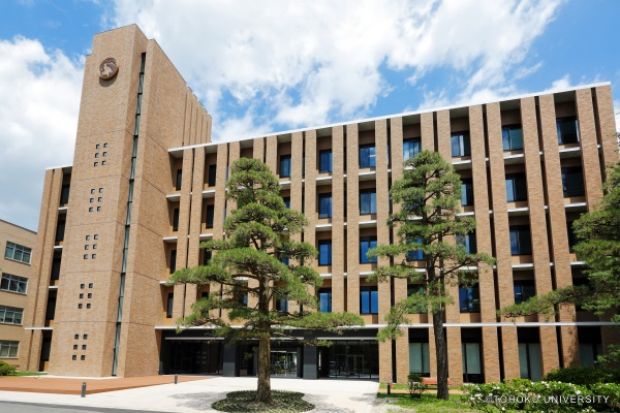Tohoku University Hosts Opening Ceremony for NanoTerasu Synchrotron Light Source
A ceremony was held on May 18, to mark the start of operations at Japan’s most powerful next-generation synchrotron radiation facility, NanoTerasu Synchrotron Light Source, located at Tohoku University’s Aobayama Campus.
In his congratulatory message, Japan’s Minister of Education, Culture, Sports, Science and Technology, Masahito Moriyama, expressed his hope that the NanoTerasu Synchrotron Light Source “will be utilized by a broad spectrum of researchers from academia to industry, and contribute to the creation of important innovation not just in Japan but around the world.”
Known colloquially as NanoTerasu, the facility has a 110–long linear accelerator and a circular accelerator with a circumference of about 350 meters. It is often likened to a “giant microscope” capable of analyzing material structures at the nanoscale by exposing them to extremely bright light.
The project is a joint development between the National Institute of Quantum Science and Technology (QST) and the Photon Science Innovation Center (PhoSIC), and is supported by a public-private regional partnership that includes Miyagi Prefecture, Sendai City, the Tohoku Economic Federation and Tohoku University.
In his speech, QST President Shigeo Koyasu said that NanoTerasu will help to ensure that Japan remains at the forefront of synchrotron radiation research by fostering a dynamic ecosystem that generates cutting-edge science and innovation on a global scale.
He spoke of prevailing despite the challenges faced during the construction of NanoTerasu – such as the shortage of resources during the COVID-19 pandemic – and noted that the facility was able to achieve high-brightness and high-stability light from the outset. It also has an experimental hall that is a radiation-free zone, making it more accessible and easier to use.
“Starting next March, in addition to the already-operational coalition system, a shared-use system for researchers from Japan and abroad will be launched, designating NanoTerasu as a national synchrotron radiation facility,” Koyasu added. “The realm of nanotechnology is incredibly small and dark. By illuminating this extremely dark space, NanoTerasu will bring significant benefits to both academia and industry, serving as a beacon of hope in an era marked by volatility, uncertainty, complexity, and ambiguity.”
Tohoku University President Teiji Tominaga continued the theme of hope in his speech, describing NanoTerasu as a symbol of the region’s recovery from the 2011 Great East Japan Earthquake. “As a research facility that integrates the most advanced science and technology, NanoTerasu aligns with our vision to be a University of International Research Excellence.
“The completion of NanoTerasu is not an endpoint but a beginning. And as the sole academic institution among our partners, Tohoku University remains committed to collaborating with industry, academia and the local community to promote academic development and foster new, exciting innovation.”
Construction work on NanoTerasu began in 2018, costing a total of 38 billion yen to complete. It achieved its first beam last December and officially began operations in April.
The name NanoTerasu combines “nano,” referring to the billionth scale of observation conducted at the facility, and “terasu,” the Japanese word for illuminate. It was the winning entry in a 2021 public contest seeking a bright and friendly name that would reflect the facility’s status as a world-class research hub.

